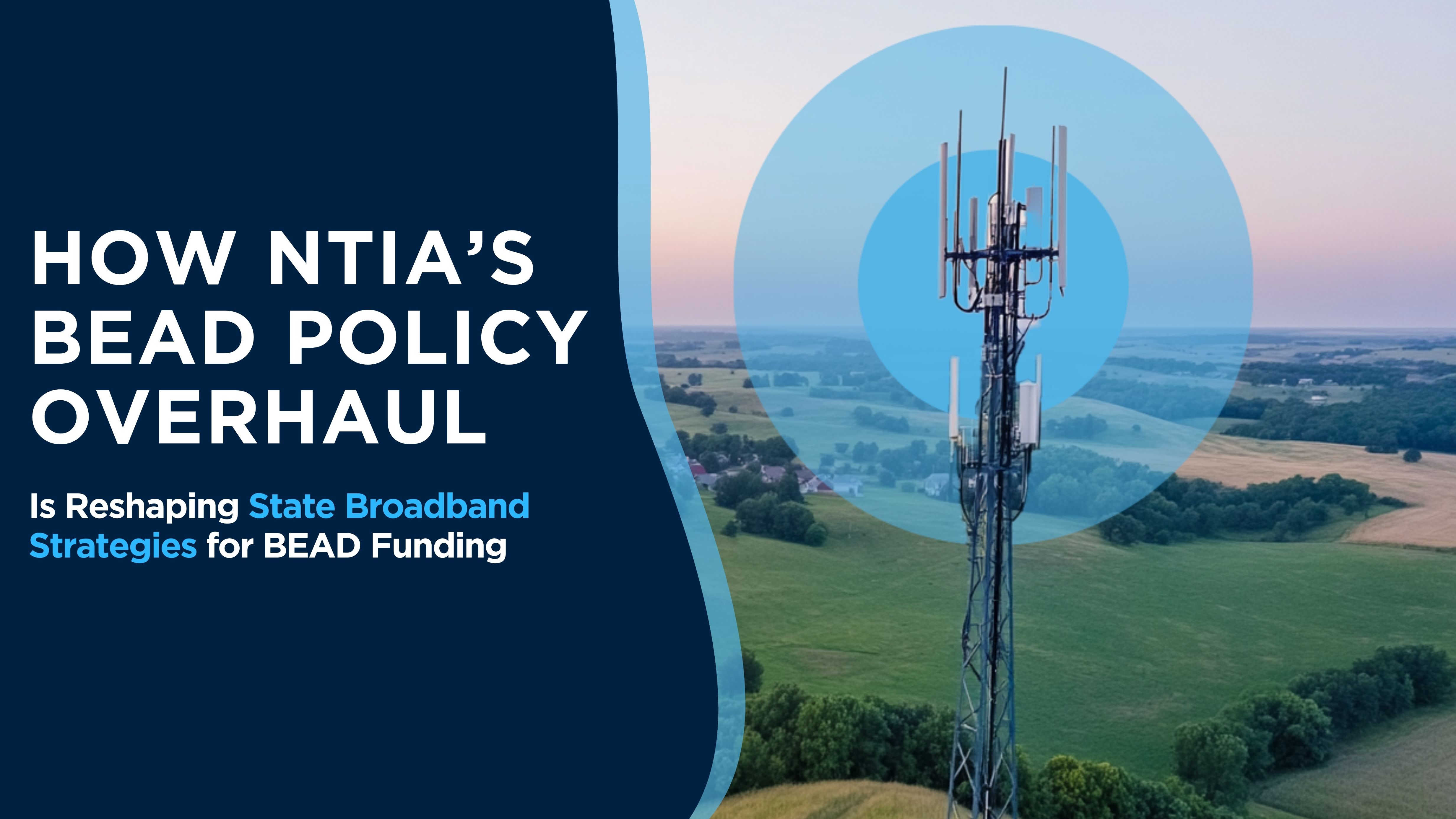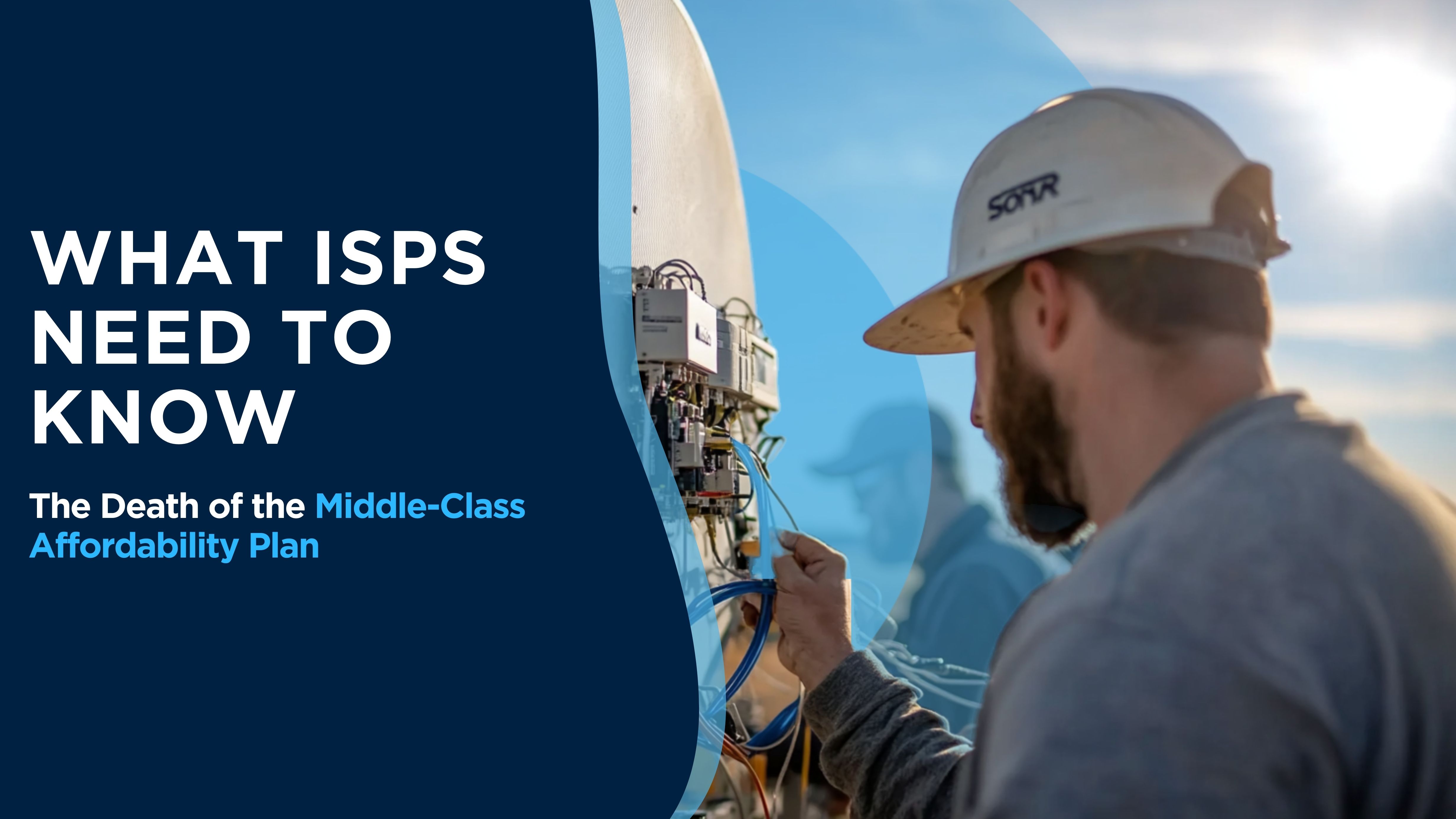Community Engagement Strategies for Broadband Providers
Community Engagement Strategies for Broadband Providers: Building Trust and Adoption As broadband providers expand their networks into underserved...
2 min read
 Georgette Lopez-Aguado
:
Jun 30, 2025
Georgette Lopez-Aguado
:
Jun 30, 2025

In a move that dramatically shifts the broadband funding landscape, the National Telecommunications and Information Administration (NTIA) has restructured the BEAD program to streamline deployment, broaden technology eligibility, and give states greater autonomy. This realignment signals both an opportunity and a challenge for Internet Service Providers (ISPs), especially those delivering fiber and fixed wireless solutions.
Let’s unpack what’s changed, how states are adapting, and why providers must rethink their grant-readiness strategies.
Historically, the BEAD program followed a fiber-first framework with layered requirements around labor practices, climate resilience, affordability plans, and workforce development. While intended to promote equity and long-term resilience, many of these mandates slowed progress and restricted participation.
In June 2025, the NTIA issued a Restructuring Policy Notice that rescinds several of these requirements. Most notably, it now empowers states and territories to lead project design and grantee selection with greater flexibility, as long as they align with core BEAD goals.
Key Change: All preliminary and provisional subawards have been rescinded. States must now conduct a new round of subgrantee selections, focused on cost-effectiveness and performance, not just fiber deployment.
With the rollback of federal constraints, states can now:
Set their own project scoring rubrics focused on lowest cost per location, rather than fiber prioritization.
Choose technology-agnostic solutions, allowing fixed wireless and satellite providers to compete on equal footing.
Streamline the grant timeline, reducing review burdens and accelerating deployment planning.
States have 90 days from the policy’s release to reinitiate their subgrantee selection process and finalize proposals. The NTIA will then review those final submissions within another 90 days—meaning many deployments may not begin until 2026.
This restructuring gives fiber and fixed wireless providers a unique chance to reenter the conversation, especially if they can deliver reliable, scalable services at competitive costs.
![]() Fixed Wireless Is Now Viable
Fixed Wireless Is Now Viable
Unlicensed fixed wireless and LEO satellite providers are no longer deprioritized by default. If your technology meets performance benchmarks (100/20 Mbps for underserved, 25/3 Mbps for unserved), you’re eligible.
![]() Proposals Are Cost-First, Not Tech-First
Proposals Are Cost-First, Not Tech-First
States must prioritize cost-per-location as the leading metric. Factors like deployment speed or scalability can only be considered if bids are within a reasonable cost margin.
Navigating this restructuring and the years of reporting that follow, requires more than a strong proposal. You need operational systems that support compliance from day one.
That’s why we built the BEAD Funding Toolkit—a free guide and planning tool to help ISPs manage BEAD funding before and after award.
🎯 Download the BEAD Funding Toolkit
Everything you need to compete, comply, and connect communities—under the new BEAD rules.

Community Engagement Strategies for Broadband Providers: Building Trust and Adoption As broadband providers expand their networks into underserved...

One of the most unexpected outcomes of the NTIA’s BEAD program restructuring is the elimination of the Middle-Class Affordability Plan (MCAP) ...

1 min read
When theBEAD (Broadband Equity, Access, and Deployment) program was first announced under the Infrastructure Investment and Jobs Act in 2021, it...